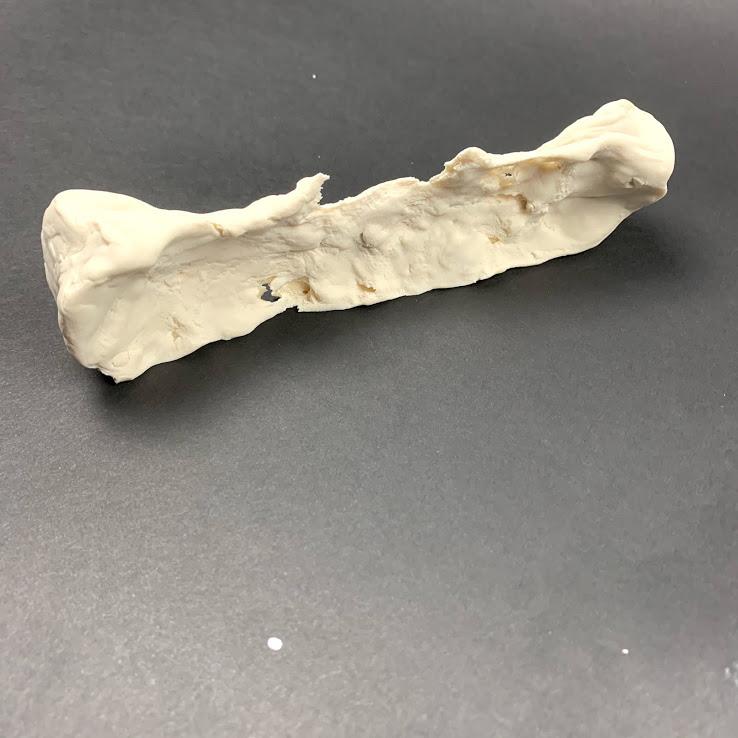
2 minute read
20. Tropes
Tropes
Tropes in architecture are very similar to tropes in literature and use a lot of the same terminology. A Hyperbole in architecture is an over-exaggeration, usually to emphasize some specific point. Take my massing composition where the rocks are arranged in a tall tower to represent the action “scale.” Both the angle of the photo and the arrangement of the rocks emphasize the idea of “scale” due to the height of the forms these things combine to create. On page 53, there is a similar idea with a composition I did with clay to represent the action “stretch.” The clay, which was initially a cube, was pulled apart from the center, leaving just enough to connect the two halves so that it exaggerates the idea of stretching the cube and thus creates a hyperbole. The Mariott Marquis in Atlanta, Georgia, is also an example of hyperbole in architecture. The bulging base of what at the top seems like a simple rectangular skyscraper draws attention to this area with a unique feature on what would otherwise be a plain building. Another literary term common in architecture is metonymy, where something is represented by something else that could be associated with it. For example, the Georgia Aquarium in Atlanta is shaped like a boat on the primary side. This boat idea stands in as a representation (continued on page 54)
Advertisement
Clockwise from the top right:
Atlanta’s Mariott Marquis Hotel designed by John Portman. Photo by Connor Carey.
A massing composition I created using rocks to represent the action “Scale.”
The front of the Georgia Aquarium in Atlanta, Georgia. Designed by PGAV Architects. Photo by Diliff
Atlanta’s Mariott Marquis Hotel designed by John Portman. Photo by Connor Carey.
A massing composition I created using rocks to
The front of the Georgia Aquarium in Atlanta, Georgia. Designed by PGAV Architects. Photo


Tropes
of water and the ocean which relates to the building’s use as an aquarium. The building’s forms thus create this abstract image to fit the metonymy. Architects also use the term metaphor when describing architecture where a building might be designed to look like something due to its associations. For example, in Delhi, India, the Lotus Temple is shaped like a lotus due to the lotus’s associations with spiritual enlightenment. This nails home the building’s use as a Baha’i temple through the cunning use of its formal shape.
The pages under the Tropes section are concerned with many ways to interpret a building’s meaning and symbolism and how form helps to do that. Movement and Transformation incite specific ideas due to their formal arrangements. Defamiliarization takes something we think we know and messes with it. Finally, the use of Light creates less dynamic ideas in our minds using the building’s forms.

From top to bottom:
An exercise in transformation done by me using clay. Intended to represent the idea “Stretch.”
The Lotus Temple, a Baha’i temple in New Delhi, India. Designed by Fariborz Sahba. Photo by Futo Tussauds.











